'I 100% volunteered to do it': How bakery worker got DNA to crack 30-year-old murder case
Kim Wagner said she wanted to help Mandy Stavik's mother find her killer.
Kim Wagner was working as a delivery driver in Acme, Washington, in 1989, when 18-year-old Mandy Stavik disappeared.
Stavik had gone missing the day after Thanksgiving while jogging on the road to her house with her German shepherd, Kyra. The dog returned home without her.
Family and friends described her as bright and vivacious. They said Stavik loved anything athletic, from riding horseback and softball to running track and basketball.
"She was very, everything," her mother, Mary Stavik, told ABC News. "I don't know that there are words to describe her."
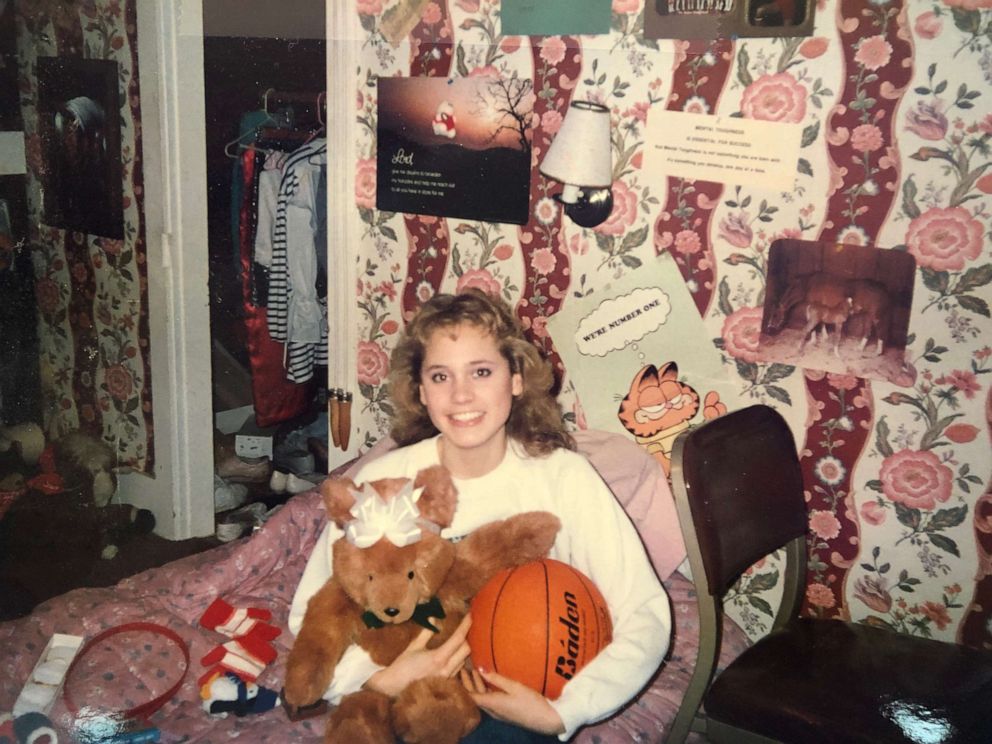
Three days later, Stavik's body was found in knee-deep water in a river just miles from her home. She had drowned and had been sexually assaulted, according to authorities.
Wagner, who was 19 years old at the time, had grown up near Acme, and remembers the fear that gripped the entire community.
"It impacted me. ... It was the first time something scary happened," Wagner told ABC News. "It changed everyone's perspective on our little corner of the world. ... It could've been the person next door. We didn't know."
Police investigated the case for years, looking closely at a few persons of interest but never arresting anyone in the abduction and murder.
But in 2013, more than two decades after Stavik vanished, police approached Wagner, who was now working for a commercial bakery, to ask about one of her co-workers.
Initially hesitant to cooperate with police, Wagner suggested they contact the bakery's human resources department. She had no idea that she would eventually be critical to cracking one of the area's most notorious cold cases, helping to finally bring Stavik's killer to justice.
It changed everyone's perspective on our little corner of the world.
Mandy Stavik's family suffered another loss
Acme is a tiny town down Highway 9 in Washington State's Whatcom County. Sheriff Bill Elfo, who was appointed top cop in 2003, described it as a place where residents don't lock their doors and leave their keys in the ignition.
The Staviks' home was on a dead-end street, a mile from the highway.
Mandy Stavik's family had come from Alaska. Her parents had divorced and her mother, Mary Stavik, had brought her three children -- Lee, Mandy and Molly -- to settle down in Acme. An older son named Brent had been shot and killed years earlier in Anchorage in 1975. To this day, his murder remains unsolved.
Mandy Stavik, 18, had just graduated from Mount Baker High School and was in her first year at Central Washington University. She'd come home for Thanksgiving break. The day after Thanksgiving in 1989, she left her home in the late afternoon to go for a jog. The run took her down Strand Road, which her house was situated on, to the Nooksack River and then back.
She usually ran with her mother, Mary Stavik, who biked alongside her, but on that particular day, she took only the family's German shepherd.
"Lee, my son, he was at the Andersons' house, which is about halfway between my house and Highway 9, down Strand Road," Mary Stavik told ABC News. "He was there visiting his friend, Jeremy. He remembers seeing her jog by, coming home."
However, she didn't return home and the dog showed up alone about two hours later.
"I was panicky," Mary Stavik said. "First person I called was her boyfriend, [Rick Zender]. ... I called the sheriff and I called everybody else I could think of, and I had everybody I knew out searching for her."
The residents of Acme started looking immediately for Mandy Stavik. She had been wearing a light-colored sweatshirt, teal-green sweatpants, light-blue running shoes with a purple stripe and was listening to a Walkman when she vanished, said Carol Virginia Herrick, who was a reporter at the Bellingham Herald at the time.
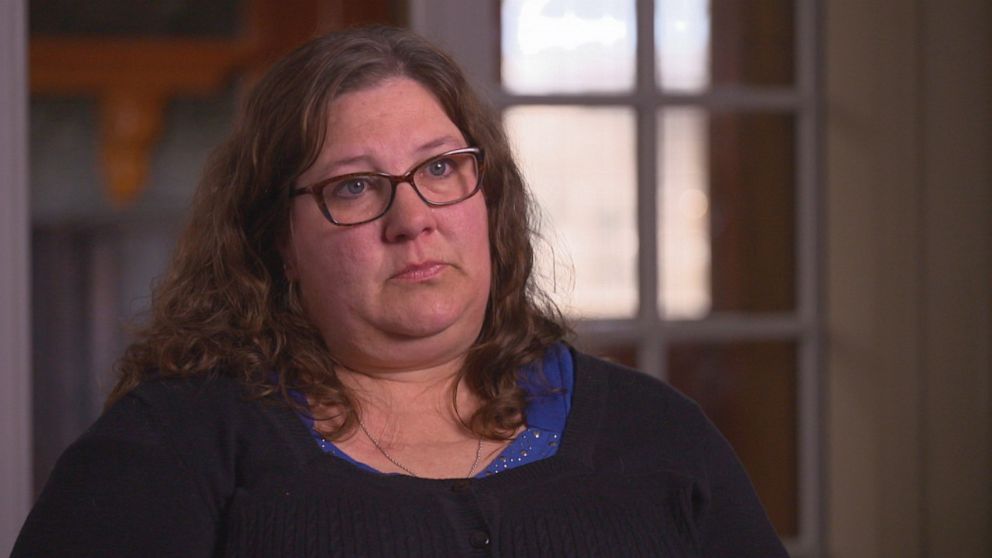
"The hope was that they'd find her alive," said Mandy Stavik's sister, Molly Brighton. "We just prayed that they would find her alive. You think to yourself, 'God, maybe she's just hurt. She can't get home.'"
Authorities initially took a close look at Rick Zender. The two had dated for about three years and had an on-and-off relationship in high school. He had brought her home from college for the Thanksgiving holiday. But ultimately, after he gave a statement to police, which was described as “extremely forthcoming," he was cleared.
Meanwhile the exhaustive search for Mandy Stavik continued. Two days after she'd disappeared, a search-and-rescue team was checking side roads when they uncovered a pair of green sweatpants. Mary Stavik was brought to the scene and shown the clothing because Mandy Stavik had been wearing green sweatpants during her jog.
"I didn't remember exactly what she was wearing. But I didn't think they could have been. ... For one thing, they were dirty. And they had ripped holes in them. And Mandy wouldn't have ever worn anything like that," Mary Stavik said.
The sweatpants were sent to a laboratory for analysis but they were never positively connected to Mandy Stavik.
On the third day of the search, Mandy Stavik's body was found nearly 6 miles from her home in the Nooksack River. She was wearing only her shoes and socks. An autopsy done the next day concluded that the cause of death was asphyxia by drowning.
"I remember running out of the house. I ran off into the field and I just remember screaming -- screaming at life, at God. How could something like that happen? How could He let something like that happen?" Brighton said.
Police begin search for murderer
Ron Peterson, a former sergeant at the Whatcom County Sheriff’s Office, said there were no signs of a struggle at the location where Mandy Stavik's body was found. The water where her body was found was quite shallow, leaving investigators wondering how Mandy Stavik, who was a strong swimmer, could have drowned.
"She must not have been conscious. ... There was no digging in the gravel. ... It was nothing," he said.
At the time, Mandy Stavik had an injury on the top part of her head that the medical examiner believed could've knocked her out. She'd also been sexually assaulted.
Around the same time, Peterson had just returned from the FBI's academy in Quantico, where he had learned that DNA evidence could be used as an investigative tool. He said that in 1989, the only people doing DNA testing in the criminal world were officers submitting their samples to the FBI. Police sent the DNA evidence taken from Mandy Stavik's body to the FBI and obtained DNA profiles for both her and the unknown male assailant. There was no one in the registry who matched the male DNA.
Mandy Stavik was buried in a cemetery up the street from her family's home.
As authorities began their criminal investigation into her murder, they followed every lead they could, including conferring with a task force that was in the midst of working on the unsolved Green River serial killer case in Seattle. Detectives from Whatcom County were ultimately told Mandy Stavik's case did not fit the profile developed for the Green River Killer.
Elfo assigned detective Kevin Bowhay to the 20-year-old Mandy Stavik cold case in 2009. Bowhay was the third detective with the sheriff's office to take the lead in trying to find Mandy Stavik's killer. He came up with the idea to do a systematic DNA sweep of as many men as he could find who were living in the Acme area in 1989.
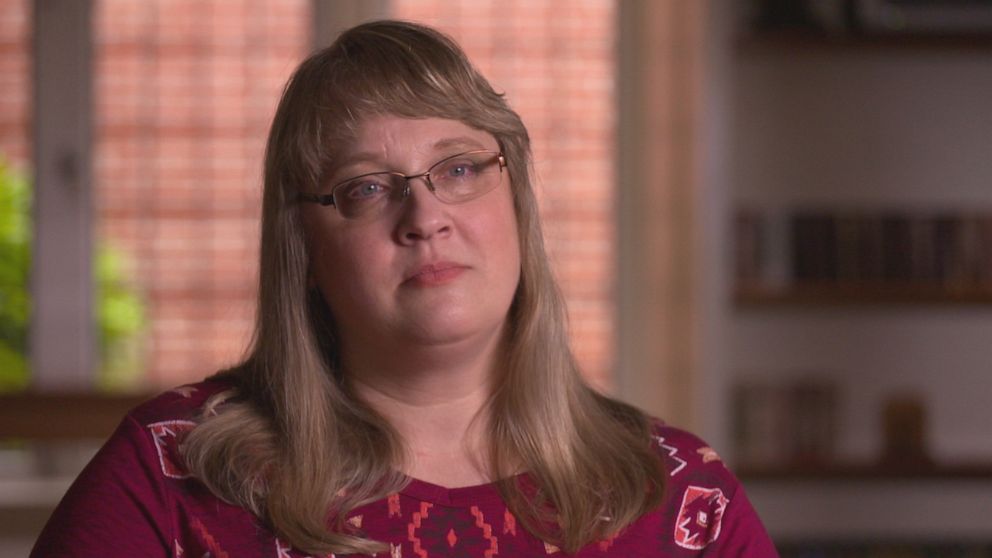
"The process was to find out back in '89 who lived where and how old they were, and then that would establish a list of who [we] needed to locate and request a sample of their DNA," Bowhay said. "I thought, 'It's just a matter of time. We're going to ask the right person, or we're going to get the right sample of DNA. We just got to keep plugging away.'"
Four years later, in 2013, after analyzing several DNA samples from residents that did not provide a match, Elfo said that a man named Timothy Bass came to the attention of investigators.
Dave McEachran, Whatcom County’s former district attorney, said that Bass was living on the same road as the Staviks in 1989 but he had not been contacted by authorities. Elfo said that there were a few houses between the Staviks' home and Bass' and that she would jog past his house nearly every day. His family knew her family and he'd attended Mount Baker High School just as she did. His younger brother, Tom Bass, was friends with Mandy Stavik as well.
I thought, 'It's just a matter of time. We're going to ask the right person, or we're going to get the right sample of DNA. We just got to keep plugging away.'
"He was a loner. He was quiet," said Annie Sirguy, who was a friend of Mandy Stavik. "My impression is, kind of, he was just a little bit of an oddball."
Elfo said that Timothy Bass had moved out of the area shortly after the murder. In January 1990, he'd married Gina Malone and moved to Everson, about 19 miles north of Acme. The couple had three children and he became a local delivery driver for the Franz Bakery Outlet.
Malone, Timothy Bass' wife at the time, said he was very controlling — that he would tell her what to do, what to wear and whom to talk to. She said that when he'd watch shows and movies that pertained to murder, "he would always say the murderer was stupid, you know, and didn't cover his tracks very well and [that] he wouldn't be stupid enough to get caught."
When police traveled to Bass' home and asked him about Mandy Stavik, he appeared to be unable to remember her name, McEachran said.
"That was definitely a red flag for me, which indicated to me he was obviously lying," said Bowhay. "Everybody knew what the Mandy Stavik case was and she ran past his house every day. How would you not know it?"
Timothy Bass also said he would not give the police his DNA because he didn't trust them, Bowhay said.
Elfo said that made Timothy Bass shoot to the top of the suspect list.
Police investigate Timothy Bass as a suspect
Bowhay said authorities headed to Timothy Bass' workplace in 2013 in hopes of obtaining a sample of his DNA from inside his delivery truck. They spoke to Wagner, who manages the bakery’s outlet store, and told her that there was an employee they were investigating.
"They came in. They said that there's an employee here under investigation for a case and they would like to get route information and maybe collect a cigarette butt in there. At that point, I just, I shut them down. I was like, 'Yeah, no. This is not...this way above my pay grade,'" she said.

She directed them to the company’s human resources department. The corporate office for the bakery, however, needed more from authorities.
"They wanted a subpoena or a search warrant and we didn't have sufficient probable cause to get a warrant," Elfo said.
But then several years later, during a conversation with her husband and friends at a bar that veered into discussing her co-workers, a name came up: delivery driver Timothy Bass, and that he had lived on the same street that Mandy Stavik had lived on before she was killed.
"This light went off in my head and I thought, 'Is that why the police were at my work?'" Wagner said.
The next time the police entered Franz -- this time in hopes of getting Timothy Bass' delivery route -- she was ready. She took the detective into her office and asked him whether he was investigating the Mandy Stavik case.
"He just looked at me like, like a cartoon character, like the eyes popping out of their head. He just looked at me, like, 'Oh, my God,' and then I said, 'Was it Tim Bass?'" said Wagner, who then gave him Timothy Bass' route.
Police still did not have a subpoena or search warrant, but Wagner decided to act on her own
Bowhay said they also learned that Timothy Bass, whose job was to deliver baked goods, wore gloves during his shifts and, oddly, didn't seem to throw things away at work.
"Tim basically took his trash home," Bowhay said. "He didn't leave any chance that somebody would find something."
Wagner then offered to help get authorities a DNA sample from Timothy Bass. But they had to decline her offer, because they could not ask a civilian to collect evidence. However, they could accept evidence brought to them. Wagner decided to take matters into her own hands.

"I 100% volunteered to do it," she said. "The reason I wanted to know was I'm a mom now. If something happened to my daughter, I'd want someone to help me. And the thought of her mom never having an answer of who did that to her daughter, if I could help her find that peace, I wanted to do it."
Wagner watched Timothy Bass closely. When the bakery got a water cooler, she saw him drink from one of the cooler's plastic cups and throw it away.
"I looked in the garbage and my heart was like...beating out of my chest," she said. "I grabbed it and I put it in my desk drawer. I was like, 'Oh, my God. That just happened.'"
When investigators sent the cup for testing, they learned that the DNA retrieved from it matched the one taken from Mandy Stavik's body.
The thought of her mom never having an answer of who did that to her daughter, if I could help her find that peace, I wanted to do it.
In 2017, Timothy Bass was arrested at Franz Bakery and taken to the Whatcom County Sheriff's Office. Bowhay described Timothy Bass' demeanor as "flat" in the interview room with police.
"I'm sure in his mind he was thinking, 'I've gone through all these measures to make sure you guys didn't get my DNA. How did this happen? Where did I screw up?'" he said. "I think once he realized we actually did have his DNA. Then, he switched."
Timothy Bass gives authorities reason for DNA
Timothy Bass told investigators that he and Mandy Stavik had been having a secret sexual relationship.
"I met her, I think, I was with my dad. We were mountain-bike riding up and down the road, and he talked to her. He had a way with people. He just talked to her and I talked to her, and then after that I'd mountain bike up and down the road and she'd jog, and then we'd talk and stuff. I think that was in the spring. It wasn't that long a relationship because she went away to college. I want to say Eastern or Central," Timothy Bass can be heard saying in interrogation tapes.
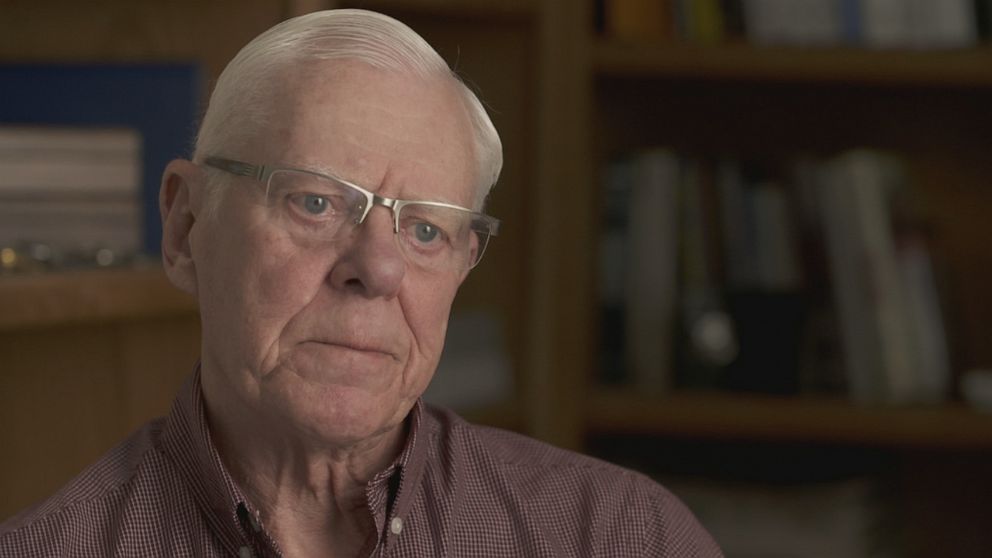
Timothy Bass said that he had no correspondences between him and Mandy Stavik, and that he had made no phone calls to her.
"She'd just say when she'd come back she'd see me," Timothy Bass said. "It was more of a friendship type thing. We just talked and then it just kind of grew into more of a physical thing, and we didn't even really do it that much. It was more kissing and stuff."
Bass then claimed that Mandy had just shown up at his house the day she disappeared
The story was his way of accounting for how his DNA had been found on Mandy Stavik, authorities said. His father, the only person who could verify his claims, had died.
But neither police nor Mandy Stavik's family believed his story.
"There's no way my sister would have had a relationship, a physical relationship with Tim Bass," Brighton said. "She was way, way, way out of his league, to put it bluntly."
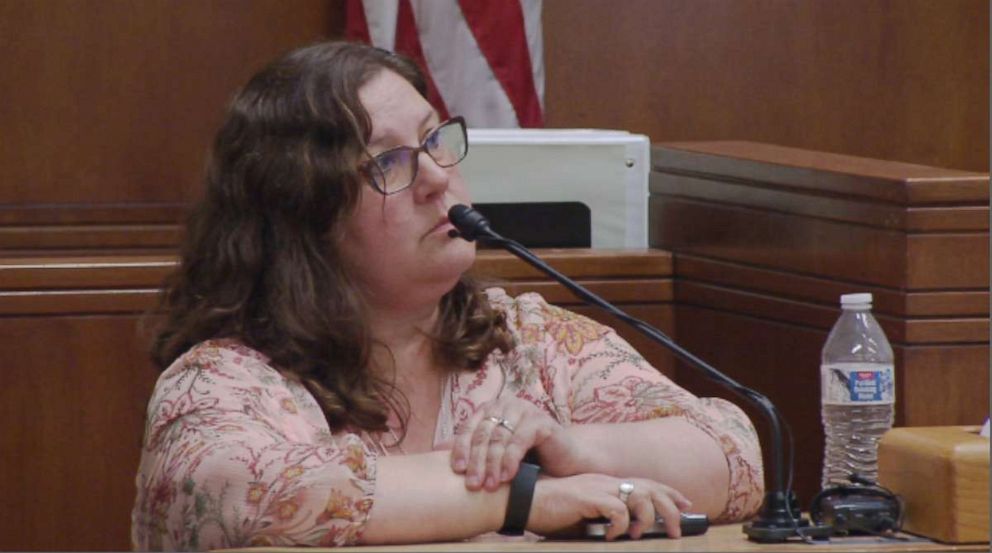
Timothy Bass was arrested on Dec. 12, 2017, and charged with murder in the first degree. Mary Stavik learned of the arrest on her 81st birthday.
Timothy Bass maintained his innocence and denied any involvement in Mandy Stavik's rape and murder.
"I don't know what else to say," he told investigators. "Everything I've said is the truth."
Malone, who was still Timothy Bass' wife at the time, originally gave him an alibi, telling police that she was with him at his house the day Stavik disappeared.
"I was on my way to Tim's house because I went to his house after school and I passed her. She was running," Malone told investigators in 2017. "So, I saw her."
At Timothy Bass’ trial in May 2019, prosecutors asked each witness whether they'd ever seen Mandy Stavik with him at any time. No one said they had.
Timothy Bass' family members take the stand at his trial
When lawyers called Timothy Bass' younger brother, Tom Bass, to testify, he told them that his older brother was very anxious after investigators asked him to submit a DNA sample.
"He said, 'The reason I'm so worried, I'm so anxious, is that I slept with Mandy.' I said, 'What?' He goes, 'Yeah, I slept with Mandy.' Then he said, 'I was hoping that you could maybe say that you slept with her too,'" Tom Bass said on the witness stand. "I said, 'How long did this go on?' He said, 'Oh, we slept together a couple times before she went to college and then once when she came back on Thanksgiving break.'"
Tom Bass told authorities he refused to lie for his brother and say he slept with Mandy Stavik.

Malone, who had by then filed for divorce from Timothy Bass, also testified. She had come forward to police previously and admitted that the alibi she'd originally given Bass was not true. She said she had no memory of being at the Bass house the day after Thanksgiving.
"I believe Gina was providing his alibi to protect herself and once she felt secure and safe herself, then she could actually tell the truth," said Bowhay.
Malone said that after the police had come to her and Timothy Bass' house in 2017, he'd told her that she needed to lie and say that he was with her that day.
"He said, 'Otherwise, I'm gonna go to prison,'" she said. "What do you say to someone like that? Like, you have to be careful about what you say. I felt like I just had to agree with everything he's saying because if I don't, I could be next. ... I wasn't a strong person back then. ... I was very weak but I should've gone with my gut instinct."
On May 24, 2019, the jury convicted Timothy Bass of murder in the first degree.
"I felt like I was holding my breath for 30 years," Zender told ABC News. "I can't even describe the relief when he was found guilty."
Before he was sentenced, Timothy Bass addressed the court.
"I would first like to say that I am 100% innocent of this crime. I wish no ill will towards anyone here, not even today. But I am having a hard time with this," he said.
The judge gave Timothy Bass the maximum sentence of 320 months in prison.
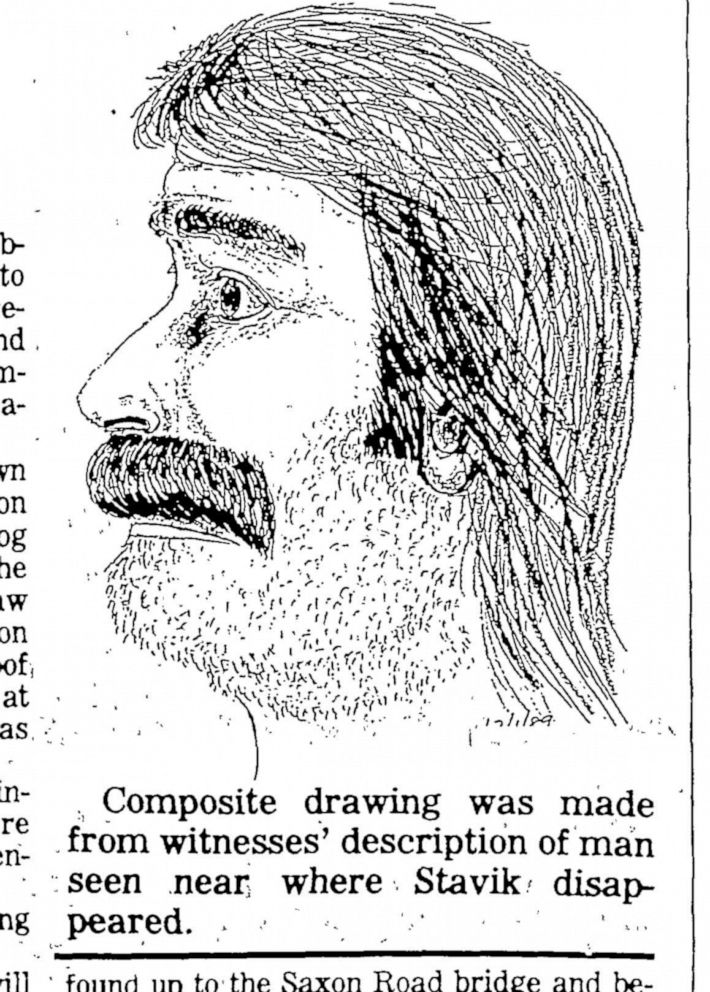
A reward fund, which eventually raised $25,000, was set up in the hopes of generating tips that might lead to an arrest. The money was later donated to a scholarship fund set up in Mandy Stavik's name at Mount Baker High School. To date the scholarship has been awarded 29 times since 1990 to students who take "an active part in the Mount Baker High School music program."
Information about the scholarship is on the high school's website.
Mary Stavik said that although nothing will bring her daughter back, there is some comfort in knowing the man responsible for her murder has finally been brought to justice.
"Mandy was special. She really was," Mary Stavik said. "I don't know why she was or how she got to be that way. ... I kind of learned that the living have to go on to honor the goodness in what you've lost."




